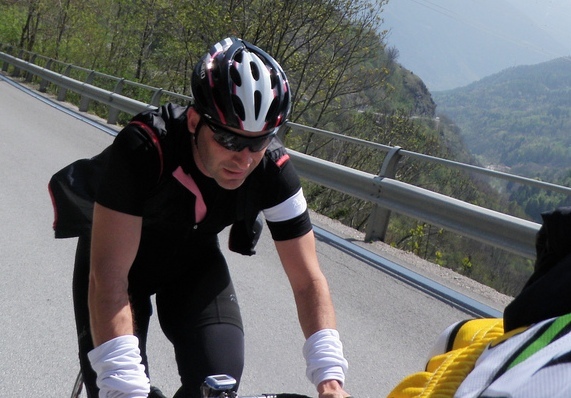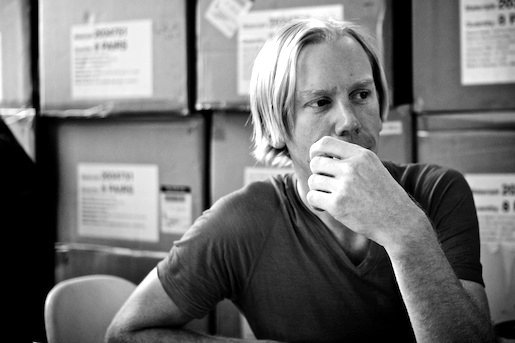 odd Wilson didn’t know these guys. But he didn’t usually handle the setups for the drug deals; it was an associate who typically made the connections — someone who had dated an Italian girl with an older sister who was tapped into Boston’s druggy Euro scene. Wilson and his partner, Larry Jenkins, moved small amounts of marijuana and mushrooms together, mostly acting as middlemen between distributors and low-level dealers. It was easy enough: Boston was a college town, overrun with fresh transplants looking to make money off their dorm buddies. Small-stakes stuff.
odd Wilson didn’t know these guys. But he didn’t usually handle the setups for the drug deals; it was an associate who typically made the connections — someone who had dated an Italian girl with an older sister who was tapped into Boston’s druggy Euro scene. Wilson and his partner, Larry Jenkins, moved small amounts of marijuana and mushrooms together, mostly acting as middlemen between distributors and low-level dealers. It was easy enough: Boston was a college town, overrun with fresh transplants looking to make money off their dorm buddies. Small-stakes stuff.
This time, though, Wilson was moving up. He was friendly with a next-door neighbor in Mission Hill who connected him with some friends from the neighborhood. They were looking to make a sizable purchase. Without meeting face to face, Wilson and the buyers had agreed on a price. For $20,000, Wilson and his associates would provide five pounds of marijuana. The exchange was to be carried out in the bedroom of Wilson’s apartment.
It was the fall of 2000, and Wilson, 22, was enrolled as an engineering student at nearby Northeastern University. When he wasn’t in class, Wilson ran in the city’s hardcore music scene. A tougher, faster evolution of punk, hardcore had flourished in Washington, D.C., and New York in the ’80s and ’90s, and was now peaking in Boston. Bands like Bane and Reach the Sky couldn’t have cared less about the radio: They had hundreds of sweat-drenched kids in VFW halls screaming their anthems — furious songs about unity and perseverance — right back at them.
Wilson earned his drug seed money from an unlikely source: bootleg T-shirts. A friend of his from the scene, Ray LeMoine, had spearheaded the operation. They capitalized on the Boston Red Sox’s infamous rivalry with the New York Yankees. Simple white tees in a blue font, they sported a combustible two-word phrase: “Yankees Suck.”
They were sold outside Fenway Park for $10 a shirt, and they sold very, very well. Wilson and LeMoine contend they had more money than they knew what to do with, and all of it was cash in hand. Looking to diversify his portfolio and grow his bankroll, Wilson began to spend some of his share in low-level drug deals. But this one was different; by his usual standards, this one was ambitious.
There were four buyers, all wearing blue jeans and dark hoodies. When they arrived, they went upstairs and paced around Wilson’s room. Everything seemed normal at first. Then they pulled out the duct tape. After that came the Uzis. Wilson and Jenkins were forced to the ground, and their wrists were bound. Jenkins had a foot on his neck and the barrel of a gun in his mouth.
He was terrified and unable to process what was happening. He lay frozen, waiting for this siege to be over. The gunmen grabbed the giant Ziploc bags full of marijuana. Then they decided they wanted more: the safe.
I’m not opening the safe, Wilson remembers thinking. I refuse to open the safe. It was a high-quality Brinks model, where he kept the earnings from his burgeoning T-shirt empire. It was more than that, though.
“All the fucking blood Todd had spilled through bad karma and theft and darkness was contained within that gold chest,” Jenkins says. “It represented all of it. His livelihood.”
Wilson didn’t have time to think. He just knew he wasn’t letting them in.
“So Todd had some superhuman thing,” Jenkins says. “He broke out of the duct tape and went fucking Hulk on these dudes.”
Pulling his hands free, Wilson leaped to his feet and charged forward. Bang.
The bullet entered clean into Wilson’s mouth. It exited out of his right cheek, then zinged down and pierced his neck. The blood started spraying immediately, neat and strong out of the side of the vein that had just been ruptured. One spray per breath. One spray per breath. One spray per breath. The bullet crash-landed on the pillow of Wilson’s bed.
The triggerman was stunned into silence. His friends took off, scrambling so fast they nearly forgot the product. At first the triggerman stood still, his hand shaking. So Wilson took a couple of steps forward and knocked the gun out of his hand. Then the triggerman took off, too.
“I don’t think they planned to shoot anyone,” Jenkins says. “It would have been a clean robbery.” If Wilson had played along, everything would have gone according to plan.
“But Todd’s not a guy you wanna fight. He’ll rip a limb off you before he dies.”
 hey started out as licensed Fenway Park vendors. LeMoine — a voluble guy who knew everyone in the hardcore scene — was the first to figure out you could make good money selling Cracker Jack and baseball-helmet-bowl ice cream inside the park.
hey started out as licensed Fenway Park vendors. LeMoine — a voluble guy who knew everyone in the hardcore scene — was the first to figure out you could make good money selling Cracker Jack and baseball-helmet-bowl ice cream inside the park.
“I’m selling ice cream,” Wilson says of one fall day. “It’s September, it’s cold. No one’s fuckin’ buying ice cream. So I’m sitting there, eating my own ice cream. And it comes across the JumboTron: ‘Yankees clinch the division.’ And none of the fans were leaving. And they start chanting. ‘Yankees suck! Yankees suck!’ I remember thinking, ‘Fuck this ice cream.’”
Cut to October 17, 1999. It’s Game 4 of the ALCS, just one day after Pedro Martinez definitively outpitched the loathed Roger Clemens and led his Sox to victory. Ten Yard Fight — one of Boston’s seminal hardcore bands — is playing its last show. The venue is Karma Club, on Lansdowne Street, almost close enough to Fenway for a home run ball to ding off its front wall.
There had always been a jocks vs. punks dichotomy in the city. But Boston punks still proudly repped their sports teams. Al Barile from the beloved band SS Decontrol would often wear a Bruins jersey onstage. Ten Yard Fight used old-timey football imagery on its album covers. And those groups weren’t the only ones to borrow from sports: One of the hardcore scene’s founding acts was the hockey-obsessed Slapshot.
Back then, Boston sports was defined by a fraught, hardscrabble energy. It had been a long time since the glory days of the ’80s Celtics, and fans of the city’s teams — especially the Red Sox — had grown dejected and bitter. Back then, rooting for the Sox was punk.
This was a collective state of mind when LeMoine printed up shirts commemorating the last Ten Yard Fight show. LeMoine was a DIY veteran: He never played music himself, but he put on some of the city’s most memorable hardcore shows. He booked the Roxbury YMCA and the Greek Orthodox Cathedral of New England and most of the other semilegal venues, too.25
LeMoine knew a guy in Sayreville, New Jersey, who ran the screen-printing business that made shirts for all the hardcore bands. On a whim, he ordered a small batch of shirts: “Ten Yard Fight” on the back, “Yankees Suck” emblazoned on the front. The night of Game 4, he headed to Fenway.
The T-shirts were an instant smash. In ’99, Boston was buzzing off the Sox’s appearance in the ALCS, and the streets were packed. The shirts started flying, not just to the hardcore kids waiting to say goodbye to their favorite band but to the masses heading into the park or spilling out of the bars of Lansdowne. They couldn’t tell you the first thing about Ten Yard Fight, but they knew that phrase, in that harsh sing-song cadence: Yan-kees Suck! Yan-kees Suck!
Twenty-four hours later, the Sox’s season was over. The Yankees won the series in five games and went on to repeat as World Series champions. But LeMoine was certain he was onto something. He sunk a couple thousand dollars into a small stock of shirts. And for the Sox’s home opener in 2000, he went out with a tiny crew, flapping forth a new version.
In line with hardcore’s aesthetics, the shirts were bare-bones. The phrase appeared in big block text in Berthold City Bold, the same font used by SS Decontrol. Effectively, it was the same logo as that of the hardcore zine Boiling Point. This time, the shirt featured just two words: Yankees Suck.

Courtesy of Anthony Pappalardo The sellers on the bridge: (L-R) Wesley Eisold (standing on railing), Brian Essenter, Jamie Manza, Eric Ferentz, Darren “Doc” Jones (behind Ferentz), Jesse Gustafson, A.J. McGuire (behind Gustafson), Chris Wrenn, Brian Masek (behind Wrenn), Anthony Pappalardo, Tim Mailloux, Todd Wilson, Ray LeMoine, Mike Dolloff, Lucian Garro (standing on railing), and two onlookers.
 uickly, a core four of Yankees Suck–ers emerged. Along with LeMoine there was Eric Ferentz, a Southern California bro who said “dude” a lot — everyone called him Rusty, for his resemblance to National Lampoon’s Vacation’s youngest Griswold. There was Jamie Manza, a charming, laid-back type who was good with the ladies. They called him Mr. Awesome. And there was Wilson, a smiley bruiser with big fat fingers that curled into meaty fists. Everyone knew what he was: the enforcer.
uickly, a core four of Yankees Suck–ers emerged. Along with LeMoine there was Eric Ferentz, a Southern California bro who said “dude” a lot — everyone called him Rusty, for his resemblance to National Lampoon’s Vacation’s youngest Griswold. There was Jamie Manza, a charming, laid-back type who was good with the ladies. They called him Mr. Awesome. And there was Wilson, a smiley bruiser with big fat fingers that curled into meaty fists. Everyone knew what he was: the enforcer.
There were others. Anthony Pappalardo. Brian “Bubba” Essenter. Darren “Doc” Jones. Jesse “Standhard” Gustafson. But it was the core four who put the start-up capital together, scrapping together their vendor wages. And it was that four who watched, incredulously, as the money came right back to them tenfold.
“Everyone said we were crazy,” Manza recalls. “‘You’re gonna be eating those shirts!’ We started with two grand and we must have made it back the first night. The next week we bought twice as many shirts. Then the next week, twice as many shirts. That was the curve. Exponential.”
At first they were frantically stuffing hundred-dollar bills into priority USPS boxes and sending them to their guy in Sayreville. But they couldn’t get shirts back fast enough. So they struck out on their own. They bought a printing press and rented a warehouse in Chelsea, just outside Boston. There was always something odd going down: pit bull puppies roaming around, guys getting unlicensed tattoos, amateur gardeners attempting to grow psilocybin mushrooms. They named it the Weird House, their production home.
Finding sellers was easy. “Every wayward punk rock teenager who needed a job, you’d shove him a bag of shirts,” Pappalardo says. “It was all on commission, so everyone had to be honest.” Whatever disaster might prevent you from selling those shirts, the response was always the same: “Tough shit,” Pappalardo explains. “You owe them money. Just like drug dealing.”
After a game let out, there’d be roughly 45 minutes to peddle to the masses streaming out of Fenway. The Suckers set up sales stations at the main gates leading in and out of Fenway Park, the points of maximum flow. Cash in one hand, shirt in the other.
They established a routine. “We’d get out there around the seventh inning, set up,” LeMoine says, “and beat up anyone else that’d try to sell shirts.”
The most lucrative piece of territory was the bridge that goes over the Massachusetts Turnpike, perpendicular to Fenway and the main drag of bars and clubs on Lansdowne Street. When the Suckers suddenly appeared, the random patchwork of one-off bootleggers that had enjoyed free reign tried to hang tough. “They were saying, ‘Get the fuck off the bridge, this is our bridge,’” Wilson recounts. “And I said, ‘Fuck you. I got eight guys. You get the fuck off the bridge.’”
Wilson wasn’t the biggest guy around. But he had a frazzled energy that was ominous. “Ray could have piped up,” he says. “Jamie could have piped up. But I said ‘Beat it.’ And they did.”
 he shirts were bold and blunt, and an immediate success. The Suckers felt like they’d stumbled upon an egregiously ignored market.
he shirts were bold and blunt, and an immediate success. The Suckers felt like they’d stumbled upon an egregiously ignored market.
“It was a groundswell,” Dan Shaughnessy, the Boston Globe’s veteran Red Sox writer, recalls of the “Yankees Suck” chant. “I mean, it became ubiquitous. To the point where you’d hear it at graduations, or weddings. Or bar mitzvahs.”
The shirts bottled the underlying bitterness — that forever-resentment toward the bullies who had beaten Boston for nearly a century — and rendered it in big lettering and sold it for $10 a pop. “We were selling them their own idea,” Wilson says. “We called ’em ‘ten-dollar crack rock for jocks.’ They couldn’t get enough.”
Peter Gammons, the godfather of Boston’s baseball writer corps, recalls talking with Derek Jeter about the chant and the shirt (memorably, you could get the option that affixed “Jeter Swallows” to the back). “It bothered him because of the kids,” Gammons says. “He didn’t understand — why would you start [using] obscenities around the kids?”
It was exactly that civility the Suckers were working against. Nothing would make them happier than to hear they’d pissed off the Gentleman Ballplayer, Derek Jeter. In their way, the Suckers were taking back the narratives from the media. And with their own printing press now open for business, anyone could be memorialized.
The obscure Sox infielder Rey Sanchez was honored via the phrase “Dirty Sanchez” — an ignoble sex act with which he shared a name. Diminutive Bruins left winger P.J. Stock was memorialized for his fists: the “P.J. Stock Crew: Ass Kicker” shirt sold in droves. Some were aggressively weird. A shirt weighing in on the then-controversy of the cryogenic freezing of deceased Red Sox slugger Ted Williams’s cranium made a simple, strange request: “Don’t Freeze the Kid.” After 9/11, there was, very briefly, a new model: “Bin Laden Sucks.”
“I sold one for $75,” a seller named John Ford recalls, incredulously, “to some overexcited fan of America.”
But the classic was the moneymaker. Nothing trumped Yankees Suck.

Courtesy of Eric Ferentz Ray LeMoine and Eric Ferentz.
 ilson stumbled into the bathroom, grabbed a load of paper towels, and applied pressure to the gunshot wound in his mouth. Downstairs, some of the sellers were hanging out when they heard the speakers suddenly turn up. Then they heard the pop. They’d known a deal was going down upstairs. Now, they were prepared for the worst.
ilson stumbled into the bathroom, grabbed a load of paper towels, and applied pressure to the gunshot wound in his mouth. Downstairs, some of the sellers were hanging out when they heard the speakers suddenly turn up. Then they heard the pop. They’d known a deal was going down upstairs. Now, they were prepared for the worst.
“None of us were packing heat, so we ran into the kitchen to grab knives in case the shooters came downstairs and started spraying,” Matthew Caplicki, one of the sellers, remembers. “Of course there were only two knives, so I grabbed a pan. Like I was gonna bonk ’em over the head.”
The gunmen bounded down the stairs and out the door before the sellers could act. Then Wilson trotted behind. Making eye contact with his friends, he pulled his hand away from his neck. A squirt — “a rooster tail of blood,” says Caplicki — sprayed up the ceiling and onto the floor. The sellers were dumbfounded. Wilson’s stumble continued out onto the porch.
Another roommate, Seth Avis, pulled into the driveway in his Ford Escort wagon, where he caught a strange sight as he rolled up the hill: a group of men running out of his home with their hoodies cinched tight around their faces and full pillowcases slung over their shoulders.
Wilson ran into his car, screaming about taking him to Brigham and Women’s Hospital, which was just a few minutes away. Meanwhile, Manza stood on the porch, mouth agape, staring at Wilson. “I go, ‘Jamie, you fuckin’ comin’ or what?’” Wilson says.
Avis screeched off, then stopped at his first red light. Wilson pressed him: “Seth! Hospital! Go! I’m fucking dying over here!”
In the reception room, a nurse tried to get Wilson to fill out the appropriate paperwork. That’s when Manza finally broke out of his shock: “He got shot in the fuckin’ face!”
 here were never any guns around Fenway. Weapons, sometimes. Brass knuckles or batons. But for the Suckers, they enforced old school: fists and feet.
here were never any guns around Fenway. Weapons, sometimes. Brass knuckles or batons. But for the Suckers, they enforced old school: fists and feet.
Given the profits, it was inevitable the competition would start selling knockoffs. None of this was regulated. But the Suckers weren’t sold on the concept of free-market capitalism. They were robber barons. They did all they could to eliminate competition.
Maybe they’d take a grape soda and dump it all over your nice clean white shirts. Maybe they’d take your merchandise and dump it over the bridge, onto the cars streaming down the Mass Pike below. From there, the action could escalate quickly.
They had anywhere from 15 to 20 guys around the park selling shirts. And there were legions of hardcore kids just hanging out with their pals in the vicinity. They had energy to burn, and they’d grown up stumbling through scraps at hardcore matinees. In their Saucony Jazz sneakers and khaki shorts, their black pullover track jackets and ear plugs, they looked uniform: like a militia.
“We’d have dudes sitting on the rails, watching us sell shirts, waiting for shit to go down,” Manza says. “It was free security-slash-thuggery.”
They started using Nextels to communicate. One chirp would activate the militia. Wilson would usually lead the charge. If you ever thought you had them outnumbered, you were wrong. In seconds, two Suckers could turn to four could turn to 20.
One bright Sunday afternoon, Jesse “Standhard” Gustafson found himself in a brawl with a construction-worker type not partial to punks. It quickly became a free-for-all.
“I had my hand in what I thought was his mouth,” Standhard says. “But was apparently his eyes. I look down and have blood caked on both hands.” Standhard swung the winning blow with a souvenir mini-bat — given away by the Sox, fortuitously, in a Fenway giveaway just a few days prior.
Once, in the heat of a melee, LeMoine didn’t realize he had squared up with an undercover police officer. Perhaps feeling good that day, the officer let LeMoine go with a warning and pat on the back.
“[I heard] ‘Good fight, kid. Get on your way,’” LeMoine says. “Only in Boston can you beat up a cop and hear, ‘Nice fight.’”

Courtesy of Jonathan Choe Todd Wilson and Ray LeMoine in the Weird House.
 enway-area T-shirt bootlegging had historically been unregulated and disorganized. But suddenly, there was a squad. And the shirts weren’t direct trademark violations. If Yankees Suck was anyone’s intellectual property, it belonged to the Suckers.
enway-area T-shirt bootlegging had historically been unregulated and disorganized. But suddenly, there was a squad. And the shirts weren’t direct trademark violations. If Yankees Suck was anyone’s intellectual property, it belonged to the Suckers.
The kids tried to go legit, each one paying the $60 fee at City Hall for a hawker-and-peddler license. But the rules of where and when they could sell always seemed to be shifting. Whatever they were doing, it seemed, it was illegal.
Once they’d had enough hassle — and enough money — the Suckers found themselves a lawyer. Tom Giblin, a onetime assistant D.A., was the kind of guy who knew guys. And what he saw with Yankees Suck, Giblin claims, was a classic case of corruption.
“That particular detail” — a unit composed of the Boston Police Department’s generally obscure code enforcers — “responsible for hawker-and-peddlers were, shall we say, less than honorable people,” Giblin recalls. “It was, quite frankly, a question of who you know and who you blow.”26
The crew spilled into Giblin’s office, paying their bills by stacking cash on his desk. He warmed to them instantly and pushed them toward trademark laws. He even got them incorporated. “Ray was CEO, Jamie was COO, I was CFO,” Wilson says. “Chief financial officer? Yeah, it was a fucking joke.”
And when they brushed off Giblin’s advocacy of regulation, he found their enterprise admirable. “They were willing to roll the dice,” he says. “They were kind of renegades.”
“We already didn’t give a shit,” Manza says. “Now we have enough money for lawyers? This is amazing. Fuck it. We’ll do anything.”
“Everyone had his number,” LeMoine says. “Everyone had his card. No one ever got in trouble.”
Giblin’s influence wasn’t enough to prevent the Sox from officially acknowledging the shirts’ existence by banning them from being worn inside the park. That added a frisson of danger; to express yourself in full inside Fenway, you may have to smuggle it in like samizdat.
Once the onslaught of vendors became serious, the Sox were forced to pay for additional code enforcers. “It was not something that mixed with our family crowd,” says Larry Cancro, senior vice-president of Fenway affairs. “Families tend to come for a good time. Not a … ” He pauses. “Scary time.”
Meanwhile, the Suckers figured out workarounds. Wilson went out one night with his bolt cutter and a satellite image of Fenway Park, snipping barely perceptible holes in chain-link fences for escape routes from the vicinity of the park. Certain sellers would be delegated to tail duty, hitting the Nextels with warnings when the code enforcers got close. And when the enforcers finally approached, the response was simple: run.
That a bunch of skinny punks could outsprint the police wasn’t particularly surprising. They’d go through or over fences, duck into cabs, blend into the crowds. Further tipping the balance: the physical state of their primary nemesis, the mustachioed veteran code enforcement officer Sergeant Chris “Tiger” Stockbridge.
“Stockbridge, he was just this huge dude,” Bubba says.
“The guy weighed like 400 pounds,” Doc swears.
“He was a big fat guy,” Giblin says, “and he really had it out for these kids. But every time they saw him coming, they knew they could wait an extra couple seconds to make the sale. He could never catch them.”
That’s not entirely true. Over the years, Stockbridge had his share of wins. The sellers’ police records are pockmarked with the same charge, levied by Stockbridge over and over: “miscellaneous municipal ordinance/bylaw violation.”
Most of the time, they’d just swallow the charge: It was a basic one, easily paid out or dismissed by bored judges who couldn’t believe they were seeing the same kids again and again. But one bright June day in 2003, a 21-year-old seller named Brian Masek did his best to avoid the fine. “He tried to punch his way past me,” Stockbridge would write in his report of the incident. “I push[ed] him up against a fence while he continued to hit me in the back.”
Over the years, the kids and Stockbridge grudgingly developed an understanding. They were coworkers, effectively, and they eventually treated each other with civility. They even exchanged phone numbers and got to know one another outside of work. When the Sox miraculously beat the Yankees in the 2004 ALCS after losing the series’ first three games, LeMoine says he was in the Bronx partying with Stockbridge.
 oon, the Suckers started to notice the nuances of the Fenway ecosystem. “The sausage guys knew everybody,” Bubba says. “All the cops, all the security guards. They had all the right permits.” The sausage vendors were entrenched, legally, and, after years working the park, had managed to curry favor with the police.
oon, the Suckers started to notice the nuances of the Fenway ecosystem. “The sausage guys knew everybody,” Bubba says. “All the cops, all the security guards. They had all the right permits.” The sausage vendors were entrenched, legally, and, after years working the park, had managed to curry favor with the police.
The Suckers would often have their shirts confiscated by the police, and they long suspected the confiscations were happening for extralegal purposes. One day, they had their suspicions confirmed: A recently hijacked batch magically reappeared in the hands of the sausage guys.
“It was like, ‘All right — time to take care of these fucks,’” LeMoine says.
That day, at the end of the shift, while the sausage vendors were unloading their carts and equipment in a back lot, the Suckers struck. Led by Wilson, a crew of sellers approached and circled their enemy. A flurry of fists went flying, and the sausage guys were herded and placated quickly. One portlier sausage vendor hid in a box truck; the crew could hear him on his cellphone, frantically calling for help.
To send a message, Wilson whipped out a small knife and went around methodically deflating their carts. “We had ’em surrounded,” Wilson says. “I’m stabbing the wheels like, ‘Yeah, you wanna fuck with me, you fat fucks?’ They never sold another shirt, I know that.”
When reached for comment, a representative for the Boston Code Enforcement Police would go so far as to confirm the presence of the Suckers — calling them “illegal vendors” that began to “overrun” Fenway around 2000” — and to explain that, in coordination with the Red Sox, a “plan of enforcement” was put in place in response.
Representatives refused a request for an interview with Chris “Tiger” Stockbridge. As for the alleged sausage incident, the Boston Police Department denied its existence: “Any evidence confiscated would not be turned over to sausage vendors.”
 n 1981, Washington D.C.’s Minor Threat released the song “Straight Edge” and haphazardly birthed a youth movement. Hardcore music has always defined itself by a stringent set of rules. And so straight edge — a complete abstention from drugs and alcohol, per Minor Threat singer Ian MacKaye’s personal politics — fit perfectly. It took off in scenes around the world, and Boston in particular. The city’s biggest hardcore bands, including Ten Yard Fight and In My Eyes, were straight edge.
n 1981, Washington D.C.’s Minor Threat released the song “Straight Edge” and haphazardly birthed a youth movement. Hardcore music has always defined itself by a stringent set of rules. And so straight edge — a complete abstention from drugs and alcohol, per Minor Threat singer Ian MacKaye’s personal politics — fit perfectly. It took off in scenes around the world, and Boston in particular. The city’s biggest hardcore bands, including Ten Yard Fight and In My Eyes, were straight edge.
Effectively, it was a rite of passage: A majority of hardcore kids are straight edge at some point or another. A majority lapse sooner rather than later; it’s called “breaking your edge.” Typically, it’s an individual choice. But with the Suckers, it seemed to happen en masse. And when it did, says John Ford, “It was kind of like the proportional equivalent to rumspringa.”
The Boston Hardcore Playlist
We asked one of the Suckers to compile a collection of songs emblematic of the Boston hardcore scene.
In all of its straight edge glory, here it is. The Suckers’ headquarters was a ramshackle triple-decker on 38 Calumet Street in Mission Hill, a neighborhood then still known as a rough hive of shootings and petty crime. The original tenant was Pappalardo, who played guitar in Ten Yard Fight and In My Eyes and cowrote straight edge anthems like
“Another Way” and
“We Know the Truth.”
The last Ten Yard Fight show — the night the Yankees Suck shirt was born — was eventually christened Edge Day, and it’s now commemorated internationally as a celebration of the straight edge lifestyle. But eventually, like all of his friends, Pappalardo broke his edge.
“Our house went from where you’d go to play a board game and eat a vegan pie,” he says, “to where you go do drugs.” The bars close at 2 a.m. in Boston. Before long, Calumet Street became the after-hours spot of choice. And quickly, it went from ramshackle to outright disaster. They started calling it the Gentleman’s Club, G.C. for short.
“It was Fight Club–style,” Pappalardo says. “Bunk beds. We cleared out all the food and people were sleeping in the pantry. The heat was broken, always. If a light went out you just borrowed it from somewhere else. It was like, ‘Don’t go in the kitchen anymore. There’s no more light bulbs in there.’ The handle for the toilet broke, and going to the store to buy a handle becomes a big deal when you’re fucked up all the time and all you have to do is stand there with T-shirts. It was a lot easier to tie on a fucking shoelace, and that’s how you flush the toilet. There were no fucking rules.”
There was a learning curve, though. New to alcohol, hardcore kids would end up bingeing on Amaretto Sours and spewing multicolored vomit all over the front porch. Soon enough, marijuana, mushrooms, and ecstasy made their way into the house.
“I remember it all pretty well for some reason, which is mind-blowing for how much high-grade drugs we were doing then,” Pappalardo says. “You gotta remember — that’s when pills became really easy to get.”
Bubba was a pharmacology student at Northeastern at the time. He’d try to intercede when he could, try to explain to the crew what they were putting in their bodies.
“Usually they’d tell me to go fuck myself, and to quit fucking with their highs,” he says. “And these are the guys who on Friday nights used to be like, ‘I’m not going to that shitty bar.’ All of a sudden they’re there till the bar closes down, dancing all night fucked up on speed and quaaludes. Who the fuck does quaaludes? I didn’t know that shit existed.”
“Bubba was like, ‘Don’t do high-potency Oxys. You will ruin your life,’” LeMoine says. “‘Here’s, like, a Vicodin.”
“Bowls of Vicodin,” Pappalardo says.
“You go from doing nothing to all of a sudden you’re smoking weed, doing coke, quaaludes, E?” Bubba says. “Holy Christ. It turned into fucking Led Zeppelin.”

Jonathan Choe Seller Jonathan Choe outside Fenway.
 fter every Sox game, they’d dump out the cash on the floor of the living room of 38 Calumet and count their earnings. Piles and piles of sweaty, crumpled 10s and 20s. Some were more industrious than others, with a seller named Jonathan Choe considered the best of the bunch. “He was the most charismatic, hardworking motherfucker on earth,” Wilson says. “And he didn’t sleep. The kid had gray hair when he was 22.”
fter every Sox game, they’d dump out the cash on the floor of the living room of 38 Calumet and count their earnings. Piles and piles of sweaty, crumpled 10s and 20s. Some were more industrious than others, with a seller named Jonathan Choe considered the best of the bunch. “He was the most charismatic, hardworking motherfucker on earth,” Wilson says. “And he didn’t sleep. The kid had gray hair when he was 22.”
But even weak sellers were racking it up. And it all meant more money, they said, than these guys had ever seen. “Counting twenty dollar bills until you get to a thousand,” Manza says, “and then repeating that, and then repeating that? It’s so much fun.”
There were always new ways to spend. Strippers became a common sight at 38 Calumet. All-night gambling binges at the nearby Foxwoods Resort Casino were a regular thing. At restaurants with prix fixe menus and wine pairings, they’d sit for hours, then kick the waiters a few bucks to let them crack a window and smoke cigars.
For the big four, the money was enough to see the world. They’d hit Australia, Hong Kong, Jordan, the Philippines, Guatemala, Thailand, Haiti, Argentina, Japan — always in the baseball offseason. They went to Spain, had multicourse lunches in Bilbao, got high on Xanax on the lawn outside the Guggenheim. They’d splurge on food but sleep in cars. “More money for absinthe,” Manza shrugs.
Back in Boston, the money felt like pretend. They’d splurge at Saks Fifth Avenue, then get mustard on their Prada shirts and never bother to wash the stains off. They’d run up in clubs and bars with fake platinum chains and real Breitling watches, popping bottles and waving their cash around.
LeMoine led the charge. “It was Ray who brought that real manic energy,” John Ford says. “Almost psychotic.” One night, in the midst of yet another random street fight, LeMoine impulsively jumped into a friend’s Jeep and attempted to plow it into his combatants; he ended up smashing the car against a brick wall, narrowly missing vehicular homicide.
“You gotta understand, it was mayhem back then,” Wilson says. “There was 30 of us, and somehow, we’d always find 30 guys to fuck with.”
“[The bouncers] would see a bunch of crazy dudes come in with tattoos and getting a little fucking loud and looking a little crazy,” Pappalardo says. “They wanted to kick us out for any reason. But we didn’t wanna be low-key. I didn’t know people didn’t get into fights when they went out till I moved to New York.
“We were always cognizant that we were joking,” he says. “Fuck it, we’re in a training-wheels city, we gotta play this role. Who’s gonna tell me to not go out and act like this? Who? And whether or not anyone else thought we were cool — we thought we were cool.”
 ttracting attention was inevitable, but never part of their plan. They knew they were operating in a legal gray zone. Everything they did was focused on making money fast and getting rid of it even faster.
ttracting attention was inevitable, but never part of their plan. They knew they were operating in a legal gray zone. Everything they did was focused on making money fast and getting rid of it even faster.
Eventually — after thousands of shirts sold, tens of thousands of dollars accrued and blown, and more drugs hoovered than they could ever possibly remember — the end of the Suckers was upon them. They never saw it coming.
On April 10, 2003, while the crew was selling Celtics shirts outside the FleetCenter (later TD Garden), Massachusetts State Police swarmed. The cops waited until the rush was over, until every shirt that was going to be sold had been sold. And then they came in, running out of squad cars with barking dogs, screaming “Get the fuck down!” Many were plainclothes, in cheap white Reeboks and sweatpants; some of the sellers thought they were being robbed by a rival crew. One of the younger kids, turning away from the swarm, caught a fist in the face. Then the cops unfurled zipties and forced the sellers flat on their stomachs. They confiscated the shirts and made over a dozen arrests.
The NBA was bringing legal action for copyright infringement. The shirts that were damning the crew were Celtics green, featuring the team’s shamrock logo and the phrase “Celtic Pride.” The NBA had hired a local investigator to carry out the case and threatened to prosecute the sellers.
By Giblin’s account, the NBA pushed for a contract with penalty provisions on a “stay-away” order from the areas of TD Garden. Even if the NBA had pursued minor statutory penalties, damages could have been levied for up to $30,000.
The Suckers settled by agreeing to stop selling the Celtic Pride shirt and retreated back to their home turf. But in the process of the NBA’s presentation of evidence in the hearing — the sellers sitting in court in ill-fitting dress shirts and pants borrowed from roommates with real jobs — the crew found out that the Massachusetts State Police had also come for the Weird House.
Luckily, the police had found no material evidence of wrongdoing. By some stroke of luck, the crew had moved out of the warehouse and moved all the product into a storage space days before the police arrived.
“It was straight out of The Wire,” says Tom Sarvello, one of the sellers in court that day. “‘You guys are good, but you’re not that good. [Always] two steps behind.’”
Still, it was eerie. Now they knew for sure they were being watched.
Season after season, the money had flowed in. But so had the nuisances. It wasn’t as easy to dodge the authorities. It wasn’t as easy to intimidate the competition.
In 2002, a new ownership group, led by the energetic John Henry and Tom Werner, purchased the Red Sox, intent on refurbishing Fenway and the ticket-holder experience. Drunken brawls were explicitly not part of the equation. The turf the Suckers had carved out with grit and fists was being taken back right under their feet.
In 2004, when the Sox beat the St. Louis Cardinals to win their first World Series in 86 years, the Suckers were there. They piled into a decrepit Mercedes-Benz Sprinter they’d purchased. For all of the nefarious activity it hosted, they called it the Sticky Van.
“We took seven of us and an 8-ball [of cocaine] and we drove straight through the night,” LeMoine says.
They finagled their way into St. Louis’s Busch Stadium for Game 4, and even made it onto the field. In the official Disney World commercial, as the camera pans to the Sox dogpile on the pitcher’s mound, you can see LeMoine sprinting left to right across your screen. He’s wearing a backward Sox hat and jacket open over a Johnny Damon shirt the Suckers were hawking that season. Right on cue, a pudgy security guard appears, busting his ass while chasing LeMoine down.

LeMoine on the field at the World Series in St. Louis immediately after the Red Sox’s Game 4 victory.
The spoils from the victory parade were preposterous. It took them hours to count the money. As Big Papi and Manny and Pedro partied on the Duck Boats, the police confiscated box after box of shirts. And yet more boxes materialized. Standhard recalls someone conveying a message to the cops: “We can make ’em faster than you can confiscate ’em.” In the three days prior, shirts were screened around the clock.
But the glory of 2004 was the beginning of the end. The Red Sox were world champions now, the darlings of Boston. And they had savvy new operators who weren’t going to let the opportunity sit idle. There were structural changes: They turned Yawkey into a pedestrian walkway, added seats to the Green Monster. Practically speaking, they made everything cleaner — almost antiseptic.
In the process of winning their miracle title, the Sox had vanquished the Yankees. It seemed impossible, but they’d transformed the town’s demeanor. The resentment had vanished. Fenway, awash in a sea of Pink Hats, was almost optimistic. This was no country for fucked-up punks.
Meanwhile, the personal relationships of the Suckers began to fray. More than four seasons of shirt-selling, fighting, and drugs had left everyone a little jittery. “There was a lot of casual substance abuse that turned [less casual],” Doc says. “It got unsavory. It was kind of like the band had broken up.”
“We never got to the important stuff,” Manza says. “We never got to the things that make friendships last. We just rode ourselves and rode each other as hard as we could.”
“It was like the scene in the Scorsese movie before they start playing the really sad song,” Pappalardo says. “‘Layla’ was up next. I felt ‘Layla’ queuing up!”
 uch of this turmoil could be traced back to Wilson’s shooting. “So Todd pulls through,” LeMoine says, remembering the immediate aftermath. “And he’s all fucked up and has this crazy scar. And everyone thinks he’s this crazy dude who got shot in the face.”
uch of this turmoil could be traced back to Wilson’s shooting. “So Todd pulls through,” LeMoine says, remembering the immediate aftermath. “And he’s all fucked up and has this crazy scar. And everyone thinks he’s this crazy dude who got shot in the face.”
When Wilson regained consciousness, the crew was there waiting for him. “Everyone reconvenes at Brigham and Women’s [Hospital],” LeMoine says. “We thought the dude was dead.” A detective dressed like a Miami Vice knockoff showed up. The guys didn’t know what to say: Nobody wanted to snitch. At first, Jenkins, Wilson’s drug-dealing partner, pretended it was a deal gone wrong over car speakers.
Eventually, he confessed. It turned out the perpetrators were known offenders, and the cops’ investigation turned their focus on the attempted homicide. In exchange for grand jury testimonies, Wilson and Jenkins were not charged with any crimes.
The bullet missed Wilson’s teeth, missed his jawbone, and zinged right through his throat. But the doctors had to open up Wilson’s neck to stop the bleeding. If the hospital were any farther from the house, if his friends weren’t as quick to transport him, he may not have pulled through. On their way out of Wilson’s neck, the doctors left a massive scar trailing vertically from below his ear down toward his collarbone.
It only burnished the legend. Before, the scene knew Wilson as a scrappy brawler, the guy with an H.R. Giger–indebted tattoo of an alien on his chest. Now he was the scrappy brawler with an insane tat and the gnarly scar and the unbeatable story of how he’d gotten shot in the face and lived to tell the tale.
In reality, Wilson was deeply shaken. He was self-conscious about the scar. He’d often wear a hooded sweatshirt to hide it. He didn’t like being in public. He stayed away from Fenway for a while, did what he could at the Weird House counting or printing shirts.
“All I wanted was everything to be back to normal,” Wilson says. “And you could just tell that nothing would ever be the same again.”
There was a lot of lingering resentment over Wilson having done the deal in the house without telling anyone. Wilson also brought a crew of “idiots,” he admits now, to the inner circle: OxyContin-loving “meathead jocks from Revere.” Manza and LeMoine didn’t trust them and, by proxy, began not to trust Wilson.
Eventually, LeMoine consolidated his power. Rusty left first, amicably. Wilson was excommunicated more harshly. Communication had completely broken down; at one point, Wilson and LeMoine were even stealing the Sticky Van from each other, back and forth. Soon, there were no more revenue shares for Wilson. “A third of that money was mine,” he says. “Ray basically fucked me.”
Manza and LeMoine, feeling increasingly claustrophobic in Boston, eventually made a blasphemous transition: They moved to New York. They ran around the city together for years, supplementing their inconsistent employment with their leftover Yankees Suck largesse, feasting at Blue Hill and Gramercy Tavern, partying at Spa and Lit.
“He’s a greedy motherfucker, man,” Wilson says of LeMoine. “It’s his nature. He could have a thousand dollars in his pocket and he’d steal a candy bar.”
“‘If it’s good for me, then it’s not a lie’ — that thought, that’s a version of reality for [LeMoine],” Manza says.
To this day, some of LeMoine’s closest friends are the guys with whom he built the Yankees Suck empire. But LeMoine, Wilson, and Manza no longer speak.
“We were shitty humans,” Manza says. “We took advantage of people. We stole shit.” And as for LeMoine: “He’s the most manipulative person I’ve ever met.”
“They are my old friends, and I miss them both,” LeMoine says.
 y 2006, the business had dwindled, then disappeared. But for a few years after they left town, it was up and running with middle managers, and LeMoine was still getting a cut of game-day sales.
y 2006, the business had dwindled, then disappeared. But for a few years after they left town, it was up and running with middle managers, and LeMoine was still getting a cut of game-day sales.
A lot of the time, he was thousands of miles away. North Africa, the Far East: He even got to Baghdad for a while, during the Iraq War, working there briefly as a reckless, semi-licensed aid worker.27 One younger seller remembers hearing about LeMoine’s exploits while on the job: “It’d be like, ‘Hey, I’m at the Borgata,’ ‘Hey, I’m in Fiji at this two-dollar-a-night hostel.’”
“It was kind of like a weird, legendary thing,” the seller says. “Almost every year a new generation of hardcore kids were selling. Apparently it was rougher back [in the beginning]. You had to carry around a mini Red Sox bat in case anyone tried to fight you. I never got into any scuffles with anybody.”
These days Rusty lives in Costa Mesa, California, with two kids, managing a Honda dealership. Wilson is in Albany, working in construction. Manza lives in Warwick, New York, where he builds homes using the cob technique. LeMoine, now a freelance journalist, is still going 100 miles an hour. A few years ago, he showed up in the tabloids: They said he beat up Paris Hilton’s brother at Lindsay Lohan’s request. This month, he began writing dispatches from Ukraine for Gawker.
Meanwhile, Fenway is cleaner than ever. The squat, homely buildings that used to surround the park — the sub shops and the discount liquor marts — have been razed and replaced by steel-and-glass high-rises and brightly appointed eateries. “The streets look like Dubai now,” one veteran seller marvels.
Stroll around Fenway on a game day and you’ll see a remnant of the original Yankees Suck empire. There are still hardcore kids out there, but they’re legal. They follow the code enforcers’ rules, and they stand up straight and quiet, neat and orderly behind foldout card tables of merch. The team got softer, the city got softer. Even the punks got softer.
The Suckers couldn’t keep it together to start a real business; they couldn’t even keep it together to talk to each other. Their lives were brutally self-serving. They did what they wanted, thinking little of the long-term damage their actions would have on themselves or anyone else. They weren’t businessmen; they were self-saboteurs.
And really — what’s the point of selling a shirt if you might not have to deliver a punch with it, too?
“Todd and Ray, they had a way of putting people’s lives and freedoms at risk,” Manza says now. “They loved violating people’s warm, fuzzy feelings, one way or the other. All that shit worked because of how crazy those two guys were.”
LeMoine, recalling his advice to his young shirt-selling street soldiers with his crooked smile, says: “I’d just be like, ‘Don’t be a pussy. None of this matters.’”
The last time Wilson was in Boston, he sold some shirts on his own. He had some stock left; he just wanted to move enough to get the money to scalp a ticket and go check out the Sox game. He saw Sergeant Stockbridge and some of the old sellers still hanging around. They told him, We thought you were done.
“Listen, I’ll come back whenever I want to,” he said. “This is my fucking bridge.”







 Holly Anderson
Holly Anderson Holly Anderson
Holly Anderson Holly Anderson
Holly Anderson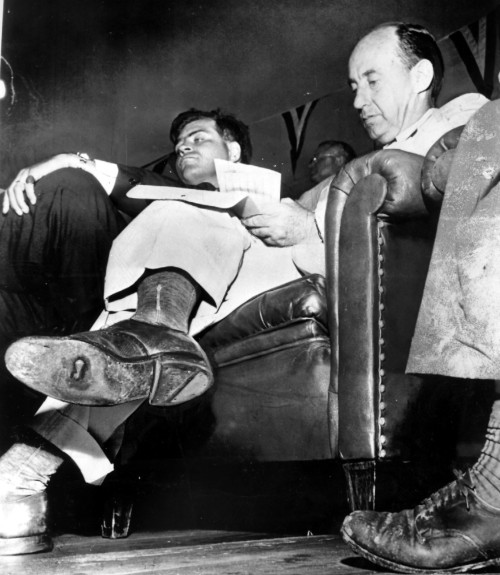
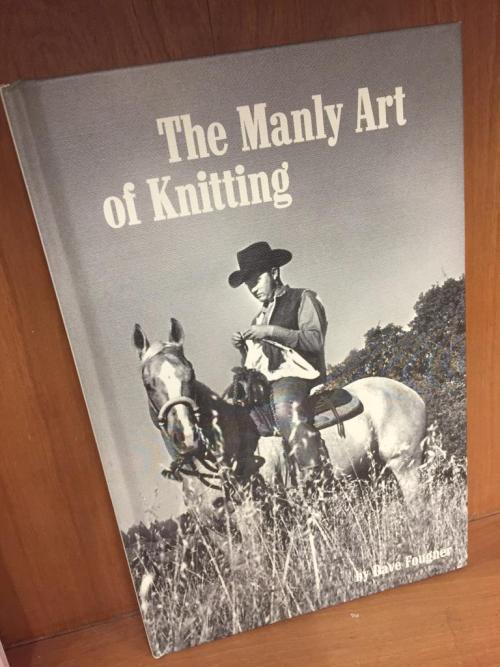


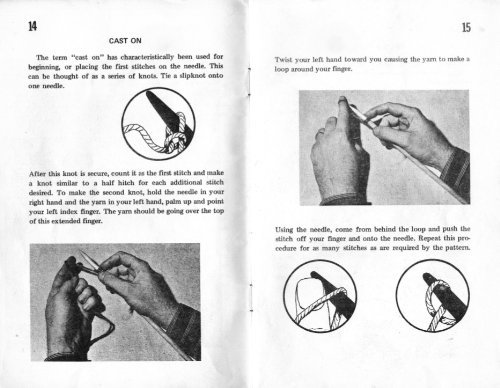

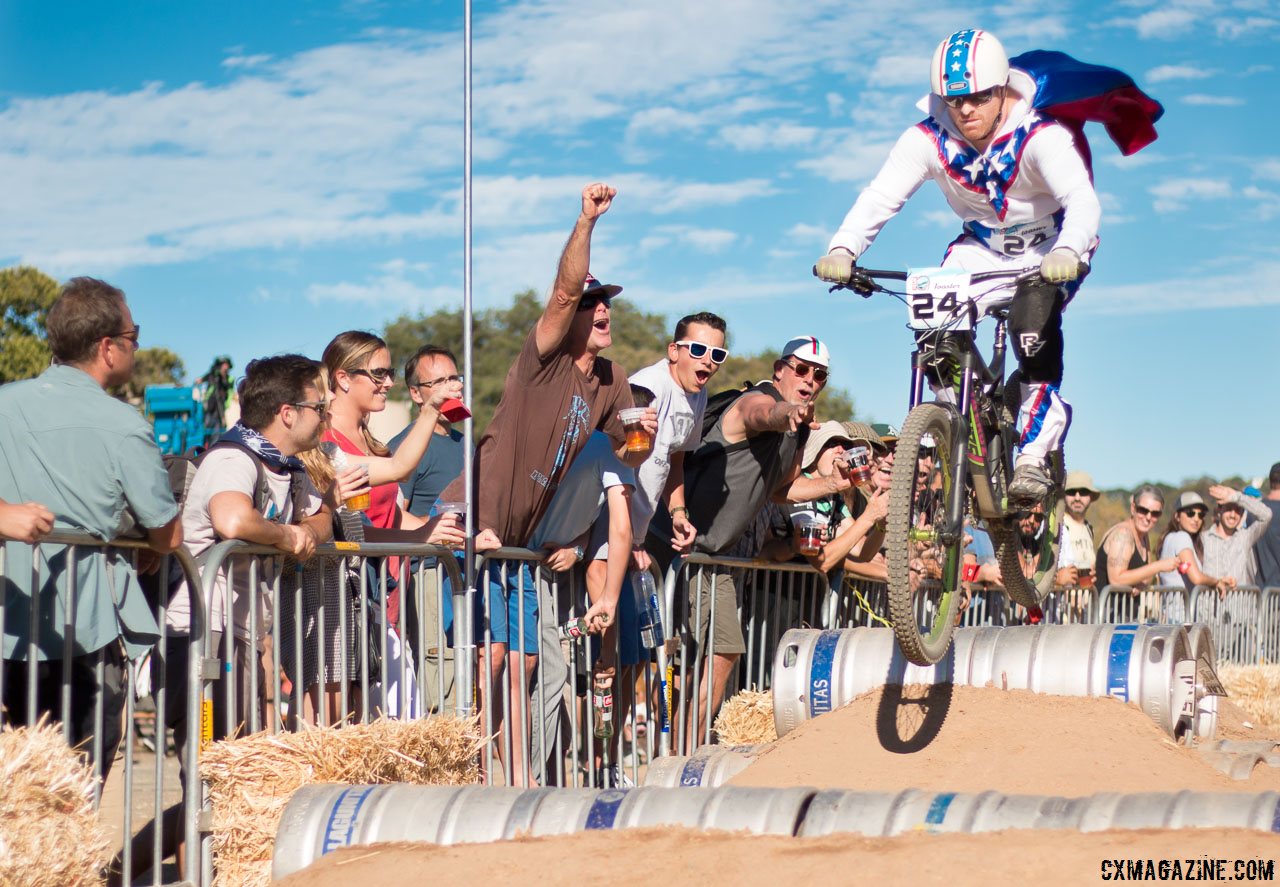
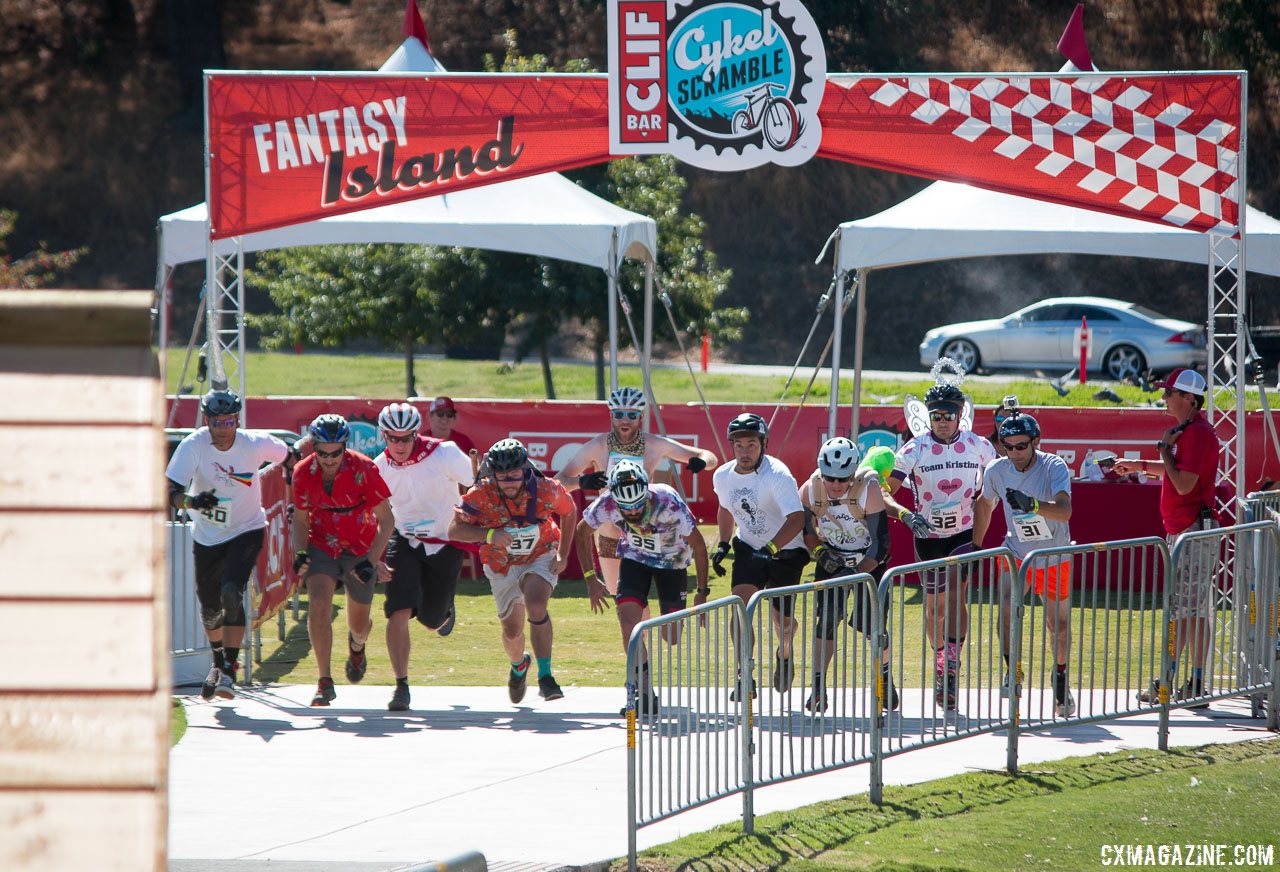
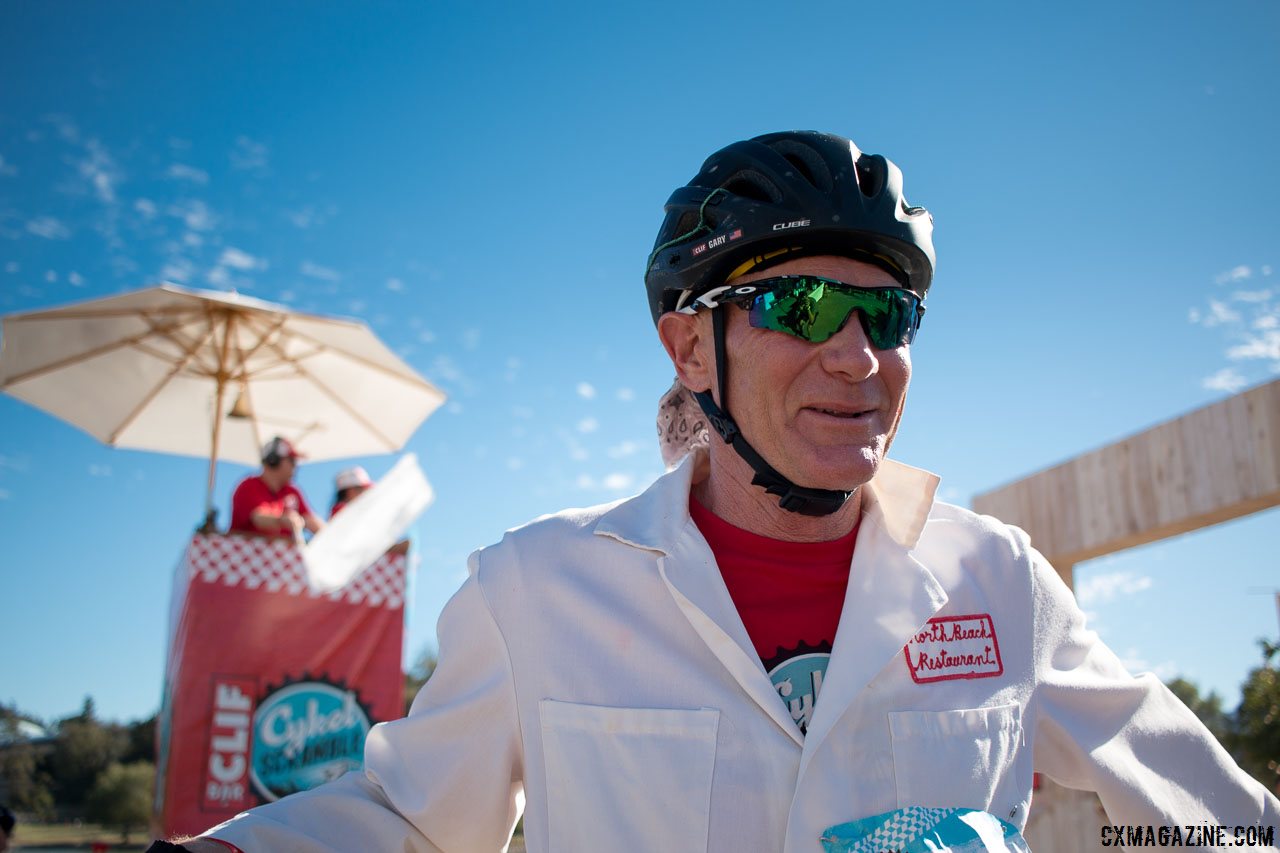
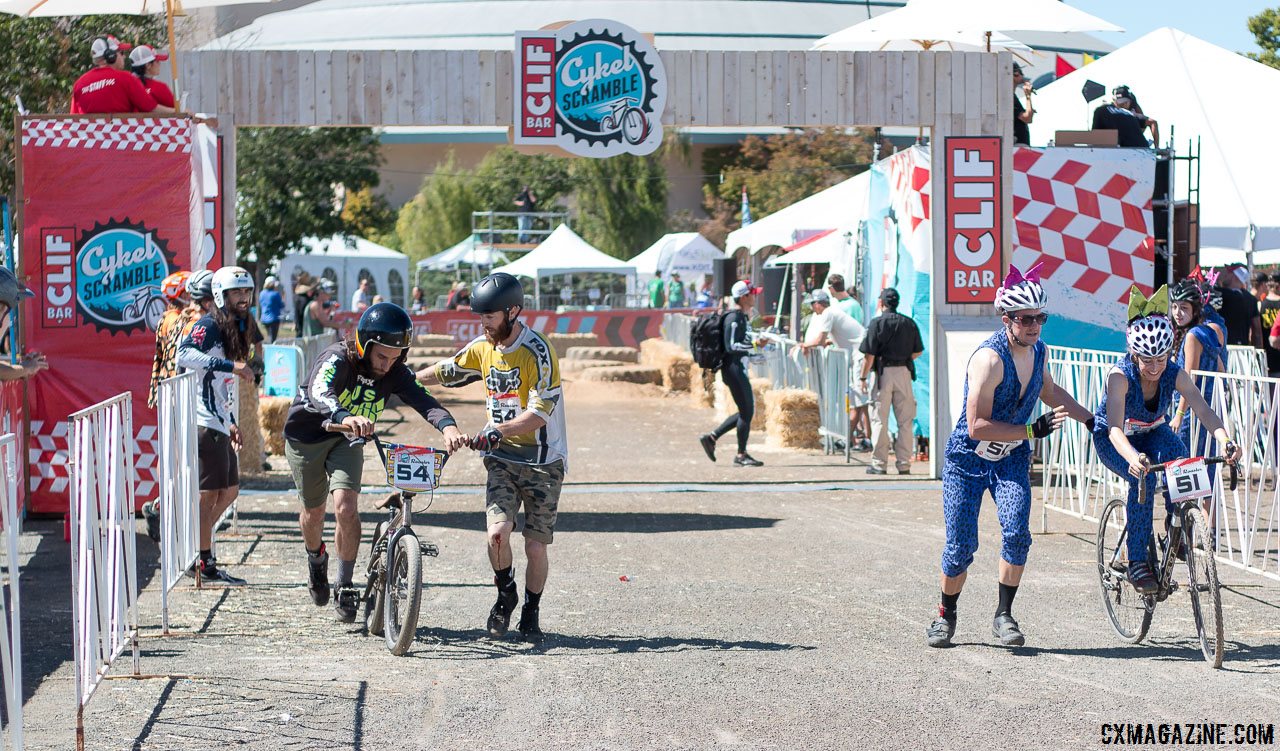
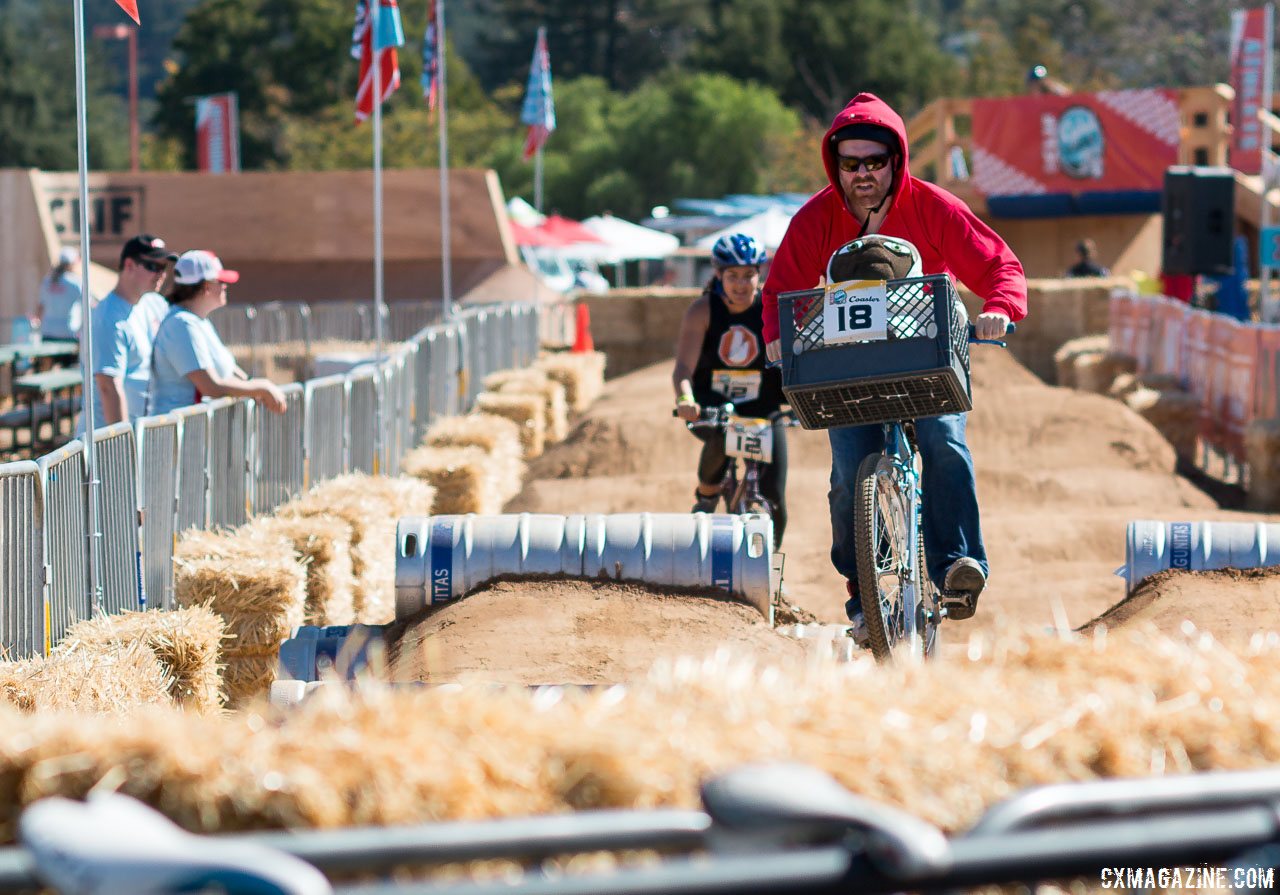
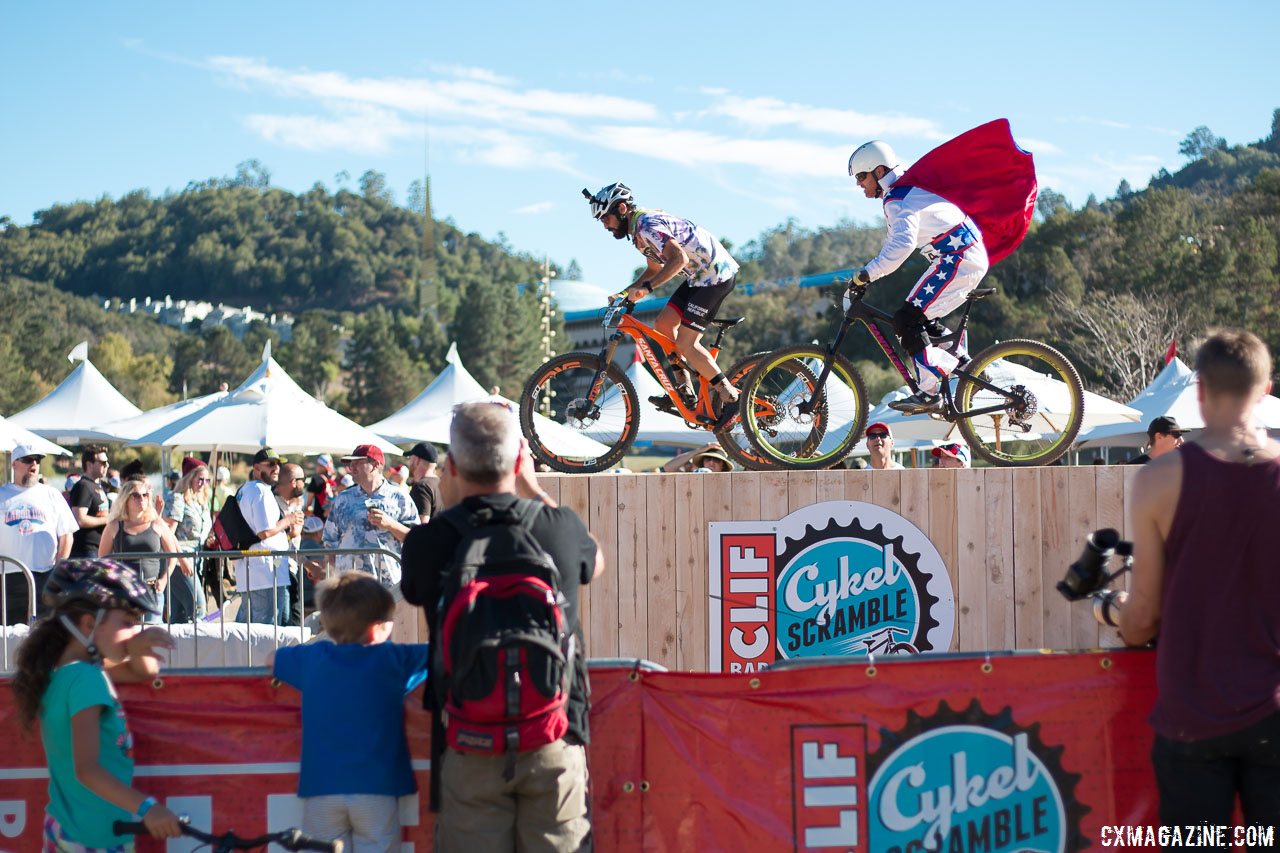


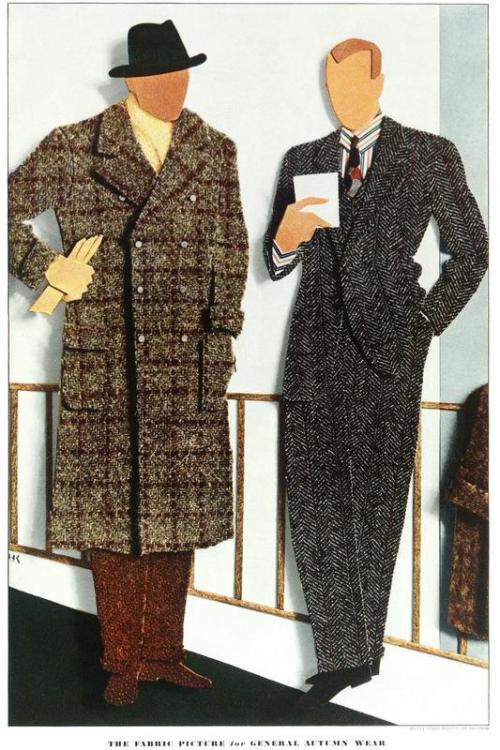
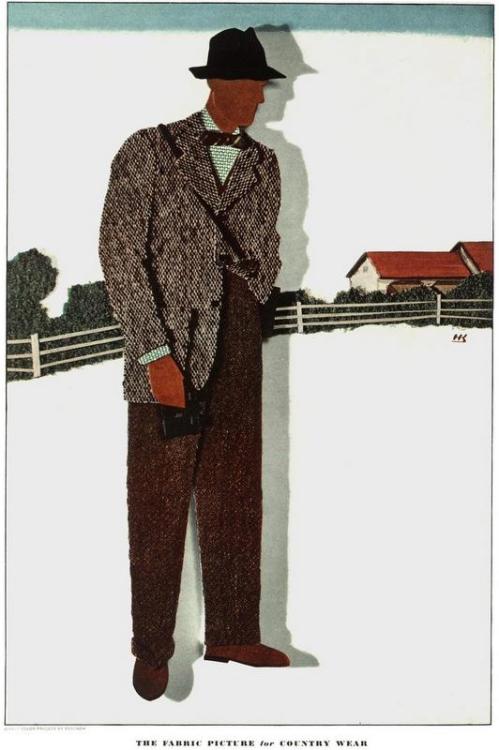
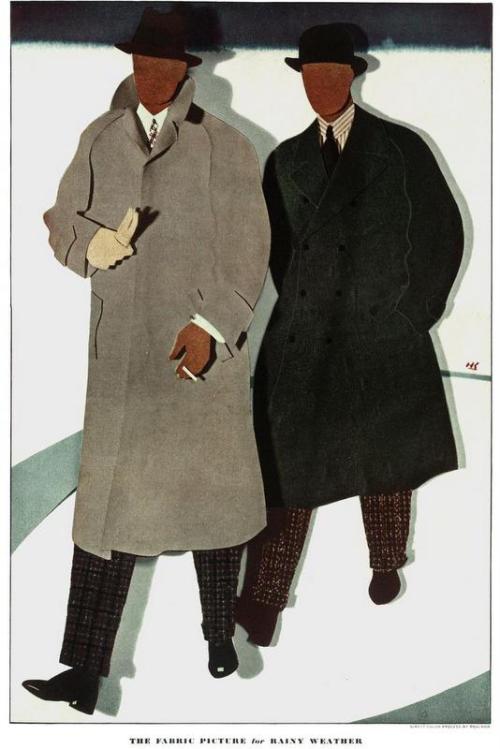






















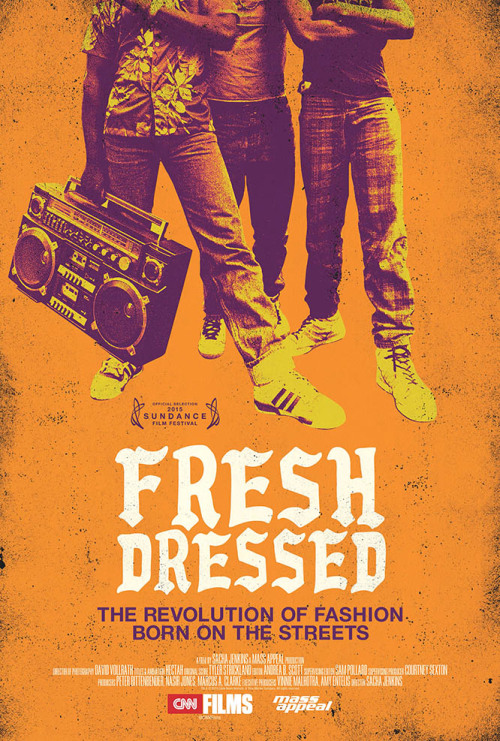
 odd Wilson didn’t know these guys. But he didn’t usually handle the setups for the drug deals; it was an associate who typically made the connections — someone who had dated an Italian girl with an older sister who was tapped into Boston’s druggy Euro scene. Wilson and his partner, Larry Jenkins, moved small amounts of marijuana and mushrooms together, mostly acting as middlemen between distributors and low-level dealers. It was easy enough: Boston was a college town, overrun with fresh transplants looking to make money off their dorm buddies. Small-stakes stuff.
odd Wilson didn’t know these guys. But he didn’t usually handle the setups for the drug deals; it was an associate who typically made the connections — someone who had dated an Italian girl with an older sister who was tapped into Boston’s druggy Euro scene. Wilson and his partner, Larry Jenkins, moved small amounts of marijuana and mushrooms together, mostly acting as middlemen between distributors and low-level dealers. It was easy enough: Boston was a college town, overrun with fresh transplants looking to make money off their dorm buddies. Small-stakes stuff. hey started out as licensed Fenway Park vendors. LeMoine — a voluble guy who knew everyone in the hardcore scene — was the first to figure out you could make good money selling Cracker Jack and baseball-helmet-bowl ice cream inside the park.
hey started out as licensed Fenway Park vendors. LeMoine — a voluble guy who knew everyone in the hardcore scene — was the first to figure out you could make good money selling Cracker Jack and baseball-helmet-bowl ice cream inside the park.
 uickly, a core four of Yankees Suck–ers emerged. Along with LeMoine there was Eric Ferentz, a Southern California bro who said “dude” a lot — everyone called him Rusty, for his resemblance to National Lampoon’s Vacation’s youngest Griswold. There was Jamie Manza, a charming, laid-back type who was good with the ladies. They called him Mr. Awesome. And there was Wilson, a smiley bruiser with big fat fingers that curled into meaty fists. Everyone knew what he was: the enforcer.
uickly, a core four of Yankees Suck–ers emerged. Along with LeMoine there was Eric Ferentz, a Southern California bro who said “dude” a lot — everyone called him Rusty, for his resemblance to National Lampoon’s Vacation’s youngest Griswold. There was Jamie Manza, a charming, laid-back type who was good with the ladies. They called him Mr. Awesome. And there was Wilson, a smiley bruiser with big fat fingers that curled into meaty fists. Everyone knew what he was: the enforcer. he shirts were bold and blunt, and an immediate success. The Suckers felt like they’d stumbled upon an egregiously ignored market.
he shirts were bold and blunt, and an immediate success. The Suckers felt like they’d stumbled upon an egregiously ignored market.
 ilson stumbled into the bathroom, grabbed a load of paper towels, and applied pressure to the gunshot wound in his mouth. Downstairs, some of the sellers were hanging out when they heard the speakers suddenly turn up. Then they heard the pop. They’d known a deal was going down upstairs. Now, they were prepared for the worst.
ilson stumbled into the bathroom, grabbed a load of paper towels, and applied pressure to the gunshot wound in his mouth. Downstairs, some of the sellers were hanging out when they heard the speakers suddenly turn up. Then they heard the pop. They’d known a deal was going down upstairs. Now, they were prepared for the worst. here were never any guns around Fenway. Weapons, sometimes. Brass knuckles or batons. But for the Suckers, they enforced old school: fists and feet.
here were never any guns around Fenway. Weapons, sometimes. Brass knuckles or batons. But for the Suckers, they enforced old school: fists and feet.
 enway-area T-shirt bootlegging had historically been unregulated and disorganized. But suddenly, there was a squad. And the shirts weren’t direct trademark violations. If Yankees Suck was anyone’s intellectual property, it belonged to the Suckers.
enway-area T-shirt bootlegging had historically been unregulated and disorganized. But suddenly, there was a squad. And the shirts weren’t direct trademark violations. If Yankees Suck was anyone’s intellectual property, it belonged to the Suckers. oon, the Suckers started to notice the nuances of the Fenway ecosystem. “The sausage guys knew everybody,” Bubba says. “All the cops, all the security guards. They had all the right permits.” The sausage vendors were entrenched, legally, and, after years working the park, had managed to curry favor with the police.
oon, the Suckers started to notice the nuances of the Fenway ecosystem. “The sausage guys knew everybody,” Bubba says. “All the cops, all the security guards. They had all the right permits.” The sausage vendors were entrenched, legally, and, after years working the park, had managed to curry favor with the police. n 1981, Washington D.C.’s Minor Threat released the song
n 1981, Washington D.C.’s Minor Threat released the song 
 fter every Sox game, they’d dump out the cash on the floor of the living room of 38 Calumet and count their earnings. Piles and piles of sweaty, crumpled 10s and 20s. Some were more industrious than others, with a seller named Jonathan Choe considered the best of the bunch. “He was the most charismatic, hardworking motherfucker on earth,” Wilson says. “And he didn’t sleep. The kid had gray hair when he was 22.”
fter every Sox game, they’d dump out the cash on the floor of the living room of 38 Calumet and count their earnings. Piles and piles of sweaty, crumpled 10s and 20s. Some were more industrious than others, with a seller named Jonathan Choe considered the best of the bunch. “He was the most charismatic, hardworking motherfucker on earth,” Wilson says. “And he didn’t sleep. The kid had gray hair when he was 22.” ttracting attention was inevitable, but never part of their plan. They knew they were operating in a legal gray zone. Everything they did was focused on making money fast and getting rid of it even faster.
ttracting attention was inevitable, but never part of their plan. They knew they were operating in a legal gray zone. Everything they did was focused on making money fast and getting rid of it even faster.
 uch of this turmoil could be traced back to Wilson’s shooting. “So Todd pulls through,” LeMoine says, remembering the immediate aftermath. “And he’s all fucked up and has this crazy scar. And everyone thinks he’s this crazy dude who got shot in the face.”
uch of this turmoil could be traced back to Wilson’s shooting. “So Todd pulls through,” LeMoine says, remembering the immediate aftermath. “And he’s all fucked up and has this crazy scar. And everyone thinks he’s this crazy dude who got shot in the face.” y 2006, the business had dwindled, then disappeared. But for a few years after they left town, it was up and running with middle managers, and LeMoine was still getting a cut of game-day sales.
y 2006, the business had dwindled, then disappeared. But for a few years after they left town, it was up and running with middle managers, and LeMoine was still getting a cut of game-day sales.
